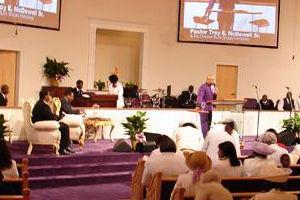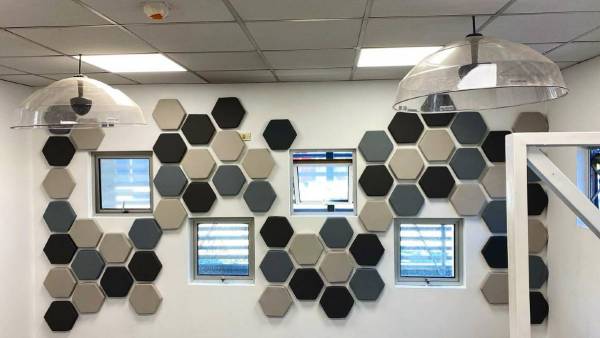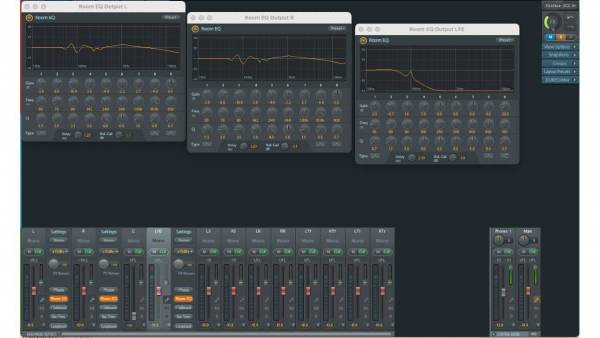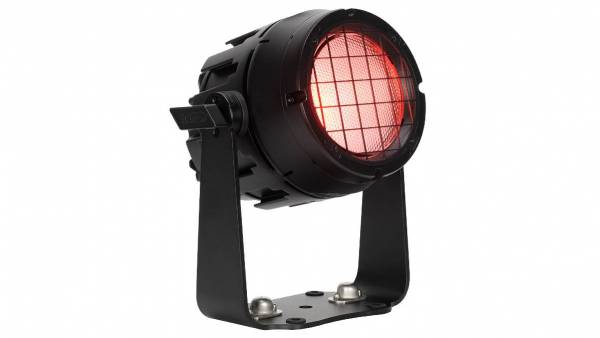 For many religious scenarios it is essential that their architectural integrity remains intact, so wireless sound systems are the most conducive to these buildings, also thanks to the omission of wiring they provide greater mobility to the speaker.
For many religious scenarios it is essential that their architectural integrity remains intact, so wireless sound systems are the most conducive to these buildings, also thanks to the omission of wiring they provide greater mobility to the speaker.
By Víctor Alejandro Galvis González
Undoubtedly, religious scenarios have historically always represented an important platform for the development of sound quality, since the communication channel between the sender, the person who holds the religious function and the parishioners, the receiving public of the message is and has been for many centuries orality.
In fact, recently Braxton Boren, a music technology student at New York University, did research in Venice where he discovered that more than 400 years ago in the Renaissance churches of that city had constructions behind the main structure, which helped separate the sound from the choir to make a double acoustic effect. that is, these religious ceremonies were the first to hear the stereo sound.
Following this trend and seeking to improve the quality and eloquence of the message, the different religions, each respecting the roots of their origin, have sought that their congregation sites have a good sound system.
Whether in churches, cathedrals, synagogues or large halls, up-to-date and quality sound technology is necessary. However, the needs of an oratory are not always tailored to the budget that the institution is willing to invest, so although there are ideal systems for a certain architecture, the success of the installation will be determined by the correct selection of equipment according to the conditions of each project.
"The church is definitely the most difficult scenario we work on, given the dynamic of the program and the spontaneous. Each ministry is unique and there is no sound system that applies to everyone," says Ángel Pérez, founder of Sonido Para Iglesias and vice president of operations for AE Global Puerto Rico.
However, regardless of the magnificence of the project, any place where a religion is professed demands some standard requirements. Erik Wilson, regional sales director for Latin America at Williams Sound, explains some of them by answering the questions: Who is going to use the system? and What will it be used for?
"The sound system is not going to be used by a technician, it is going to be used by the church leader, for this reason it has to be easy to use, configure and with trouble-shoot. In addition, you need to know what kind of events they hold, if they do simultaneous translations, choirs, music, this will determine the number of channels you should carry," explains Mr. Wilson.
Likewise, it is essential to take into account the size of the sanctuary to decide what kind of technology is necessary and in the same way to know what the national regulations are in terms of radio frequency to determine if there is any type of limitation.
The installation process
To begin the installation process in a church it is important to identify the conditions of the infrastructure where the work will be done."For a new building the earlier in the process the more efficient the design; For an existing building you still have to plan observing where we are and where we want to go and what resources we have both human and technical", describes Ángel Pérez of AE Global.
The Colombian company Musicar S.A dedicated to this type of facilities for more than 36 years, which has experience with projects in different infrastructures, from cathedrals to Christian, Catholic, Pentecostal and Presbyterian churches, explains through its general manager, Juan Guillermo Múnera, the installation of the sound system in churches, from the following process:
First sectorize. Make systems and circuits taking into account the architectural structure and the requirements of the churches in terms of the aesthetics of the enclosure, the location of the choir and altar, among others, allowing a homogeneous sound coverage.
After analyzing the power of the audio network, consider the different design parameters of sound systems such as: the area to be sounded, the noise level of each area and the application of the audio network. These parameters make it possible to determine the required power.
Then it is time to analyze the equipment and sound media, select them considering characteristics such as sound coverage, frequency response, sensitivity (sound pressure level) and nominal power of each sound medium. In addition, the height and the different installation sites must be taken into account.
Consequently, comes the selection of sound equipment, use professional equipment and accessories for high power sound systems. Modular equipment allows multiple combinations to form systems that meet the specifications and needs of each application, satisfying the strictest demands of any sound in large or small enclosures according to their sound capacity.
Finally, it is necessary to analyze and determine the amount of wiring required to make the correct installation of the equipment that will make up the audio network. Perform the measurement from the control center of the network to the location of each of the sound media for all circuits in the church.
Churches are advised to locate the control center in the electrical room of the enclosure.
Technology required
The tendency of churches, at least in American institutions, is to use wireless technology with RF or FM equipment that transmits on an FM frequency and is received on an FM receiver where the audience listens. In other cases, infrared technology is used; although now there is also the Digi-WAVE that transmits digitally in 2.4 Ghz with a patented frequency hopping technology that makes it more immune to interference.
The people who participate in the ceremony play a fundamental role when it comes to the selection of other types of hearing equipment such as microphone systems, personal monitoring and headphones. Wireless microphones, for example, are ideal for the mobility and comfort of the person who leads the ceremony, which can be handheld, headband or lapel.
Ángel Pérez, founder of Sonido para Iglesias, says that they use all kinds of professional audio, video and light systems. Equipment such as the personal mixers of AVIOM, Hear Technologies and My mix. "These equipment have been developed thanks to the needs discovered in churches, the architectural and acoustic challenges have led to the development of methods and systems of acoustic treatments that solve the problem of reverberation while maintaining the desired aesthetics," says the expert.
Currently in churches audio is closely linked to video and lighting, so the visibility of the stage is essential when installing sound and choosing wireless systems.
Other aspects
The correct installation of a sound system in religious places, does not stop at the selection of technology, each site demands a series of different requirements depending on the characteristics of its religious method or the number of people who attend.
Some churches need a system that integrates the sound of musical instruments (drums, guitar, bass, piano) or a choir; others need a system for simultaneous translation and others simply care that the speaker's message reaches well.
Erik Wilson, mentions that we must take into account the type of people who attend a certain congregation, "a significant percentage of the public that participates in this type of celebrations is of advanced age, which increases the needs for audio clarity."
He also points out the multicultural character that these celebrations can have. "One of our best clients, The Church of Ladder Day Saint, for example, brings in speakers from another country constantly, so it was necessary to prioritize in the simultaneous translation system," says regional director Williams Sound.
To keep in mind
The sales director for Latin America of Global AV Network, Mr. Leo Cothros establishes three examples of installations according to their complexity and budget.
Low: In this case, the equipment can be simple amplifiers with microphone input (this is a permanent requirement). Amplifiers vary in power and can be combinations of pre-amp and amps, but the sound is always at least 4 channels. Speakers include rear and front speakers and bass magnifiers. The amplifiers accept multiple inputs, MP3 and MP4, PC and audio sources (which are normally also present in the installation).
Medium: In this case we see multiple amplifiers, sound equalizers, speakers with their own power source, directional microphones in different places, some or some recording devices (digital, cassette, CD). Amplifiers accept all kinds of audio and video signals and switchers are usually required, which lately are HDMI.
High: In this case, we are almost talking about a recording studio: we have all the equipment described above and also digital mixers of at least 24 channels and various recording devices, to use pre-recorded materials. Also here we see more sophisticated equipment such as digital personal monitors (wireless personal monitoring systems) and various signal processors. Also the use of wireless networks and wireless devices such as speakers, microphones and signal transmitters are being used in a growing number of projects.

























Leave your comment